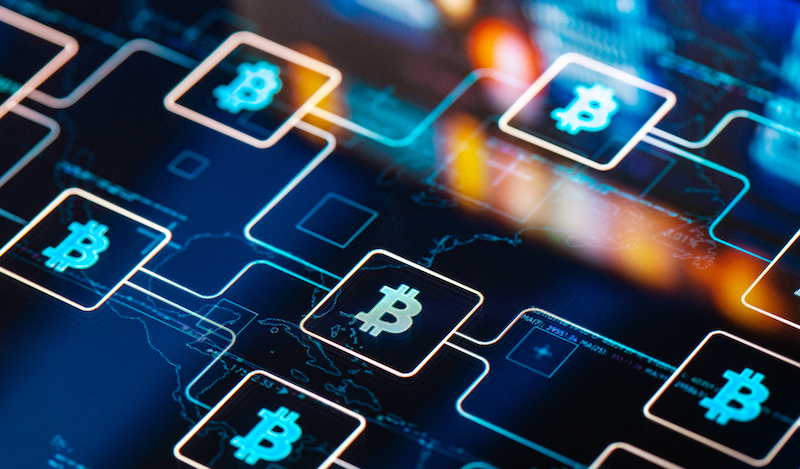
Scholar sketches the current regulatory landscape for financial technologies in the United States.
Virtual bank branches are opening in the metaverse. Digital images of cartoon monkeys are selling for $2.8 million. A couple was arrested for laundering over $3.6 billion in Bitcoin.
New financial technologies are worth big bucks—but are regulators doing enough to oversee the massive risks posed by these new services and platforms while allowing for flexible innovation?
In a recent study, Jillian Grennan, a finance professor at Duke University’s Fuqua School of Business, surveys the U.S. regulatory landscape surrounding so-called fintech, such as digital payments, blockchain, cryptocurrencies, and financial applications of artificial intelligence (AI). Because fintech represents “the birth of a new technology, a new tool for entrepreneurship, a new investable asset class, and a new way of controlling financial decisions,” Grennan argues that financial regulation has been unable to keep up with this rare area of innovation.
To understand the regulatory needs and challenges of fintech, Grennan urges regulators to understand first the economic goals underlying financial innovations.
AI, for example, reduces the costs associated with making predictions and decisions, explains Grennan. But AI’s dependence on data to make predictions also comes with costs—data privacy and integrity concerns, as well as stifled innovation as AI focuses on near-term incremental solutions rather than more human-focused innovation and new ideas.
On the other hand, blockchain—a type of digital shared storage database—allows for users to make secure transactions without the need for a third party, such as a bank. Grennan explains that financial services and institutions can most benefit from blockchain’s cost-reduction characteristics because finance is a highly centralized industry. Financial services’ adoption of blockchain and non-fungible tokens—digital certificates that reflect a unique right to ownership—could ultimately reduce customer fees and the costs of verifying authenticity, according to Grennan.
But transactions supported by blockchain, if widely adopted, could also serve as an alternative to government-backed currencies, which could derail the ability for countries to implement monetary policy and stabilize economies, Grennan warns. Widespread adoption could also give the players who launch these currencies, such as Facebook, too much control over markets and central banks.
Combining the advances driving AI and blockchain, Grennan explains, is decentralized finance—also known as DeFi—which also reduces costs by removing intermediaries or managers traditionally involved in financial transactions. Rather, DeFi transactions allow parties to create complicated financial transactions that are executed without the need for an intermediary and are then securely recorded in the blockchain. This allows for “headless” financial organizations that are more transparent and more generative of parties’ trust, a structure that Grennan says produces more customized and complex services for individual consumers.
DeFi’s cost savings do not overcome the fact that it is not a perfect substitute for traditional financial intermediation, Grennan notes, citing numerous problems with DeFi, including lack of deposit insurance, volatile prices, cyber risk, and coding issues.
Because of the new methods and risks posed by FinTech, Grennan urges that these services “do not fit well within existing regulatory frameworks.”
Grennan explains one such challenge that can arise when the government tries to regulate AI applications. In the early days of AI, the United States focused on sector-specific regulation. Self-driving cars, for example, were regulated by the Department of Transportation, whereas the Food and Drug Administrative oversaw health related AI, leading to calls for a more comprehensive approach. Since, broad AI regulation has developed but has been largely relegated to defense departments, and financial applications have not been a priority. Within finance, the U.S. Securities and Exchange Commission (SEC) has brought enforcement actions to clean up and clarify the use of customer data in AI. In addition to these enforcement actions, Grennan describes general disclosure provisions and encouraged self-governance approaches, such as internal assessments of the way an algorithm impacts consumers, as alternative regulatory tools of bias and harm reduction.
In contrast to the way AI has been regulated, Grennan describes blockchain and DeFi regulation as “targeted and specific” as regulators seek to target bad actors but encourage innovation. Consequently, the SEC has adopted the “Howey test” to determine if a digital asset is a security within the SEC’s regulatory purview, bringing many digital assets under the agency’s enforcement power.
But many DeFi platforms can avoid SEC oversight by showing sufficient decentralization, Grennan explains, which can lead to regulatory uncertainty. Grennan discusses a safe harbor plan that would allow new issuers of crypto assets three years to build a platform that is sufficiently decentralized to evade security classification and regulatory oversight during early phases, encouraging growth in the industry while allowing for oversight in the right circumstances.
Legal disputes between those who enter into smart contracts on blockchain platforms, however, present very traditional contract law and consumer protection legal challenges as consumers attempt to litigate unmet user expectations, according to Grennan. But complications arise when courts and regulators need to determine if the creators of decentralized protocols are liable when issues arise between users on their platforms. Grennan further outlines the difficulties inherent in holding developers liable, presenting additional regulatory challenges.
Grennan concludes by discussing potential avenues for FinTech regulation, such as advocating safe harbor provisions, regulatory sandboxes that allow for experimentation of new technology in collaboration with regulators, and selective enforcement actions as ways of punishing bad actors while encouraging economic growth.
Regulators cannot stand alone, however. Grennan urges developers and fintech industry players to do their part in achieving regulatory balance, encouraging trade associations and increased lobbying activity to make their interests known.



